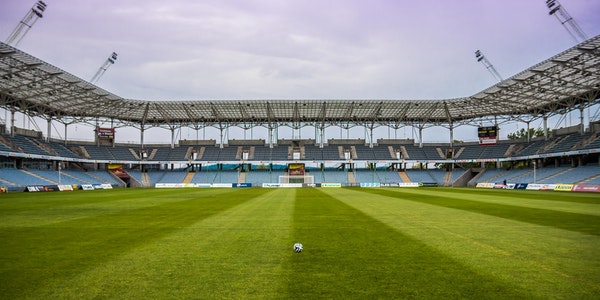(III) Practical Applications in Sports Venues
Daylight Harvesting:
Automated Dimming: Dim or turn off lights in response to natural daylight levels to maintain consistent illumination while maximizing energy savings.
Light Balancing: Adjust artificial lighting to complement natural daylight, ensuring uniform illumination throughout the venue.
Event Scheduling:
Pre-programmed Scenarios: Create lighting presets for different times of day, events, or activities, such as practices, games, and concerts.
Dynamic Adjustments: Automatically transition between lighting scenarios based on scheduled events or real-time conditions.
Weather Adaptation:
Rain or Snow Detection: Dim or increase light levels in outdoor venues in response to changes in weather conditions to maintain visibility and safety.
Temperature Regulation: Adjust color temperatures and intensity levels to create comfortable environments for players and spectators in outdoor or indoor venues.
(IV) Integration with Smart Technologies
Sensor Integration:
Integrate lighting controls with weather sensors, occupancy detectors, and other smart devices to capture real-time data and trigger adaptive responses.
Use data analytics to fine-tune adaptive lighting algorithms and optimize performance over time.
IoT Connectivity:
Connect lighting systems to the Internet of Things (IoT) for remote monitoring, control, and management from anywhere via mobile apps or web interfaces.
Enable predictive maintenance and proactive troubleshooting to ensure reliable operation and minimize downtime.
(V) Conclusion
Adaptive lighting systems offer sports venues a versatile and efficient solution for optimizing lighting performance in response to changing environmental conditions. By leveraging sensors, controls, and intelligent algorithms, venues can enhance visibility, energy efficiency, and user experience while reducing operational costs and environmental impact. As adaptive lighting technology continues to evolve, it will play a vital role in shaping the future of sports venue design and operations.
3. Remote control and monitoring
(1) Introduction to Remote Control and Monitoring
Definition:
Remote control and monitoring systems enable centralized management and real-time oversight of LED lighting fixtures in sports venues.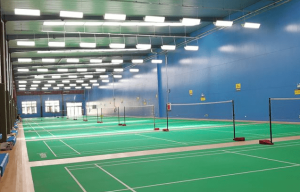
These systems utilize networked communication technology to remotely adjust lighting settings, monitor performance, and diagnose issues from a central location.
Key Components:
Centralized Control Platform: Software or hardware interface for accessing and controlling lighting systems remotely.
Connected Fixtures: LED luminaires equipped with communication interfaces (e.g., Wi-Fi, Zigbee) for remote connectivity.
Monitoring Tools: Diagnostic software, sensors, and analytics tools for tracking performance metrics and identifying maintenance needs.
(II) Advantages of Remote Control and Monitoring
Convenience and Efficiency:
Remote control allows lighting operators to adjust settings, such as brightness, color, and scheduling, without physically accessing each fixture.
Centralized management streamlines operations and reduces the time and effort required for maintenance and troubleshooting tasks.
Optimized Performance:
Real-time monitoring enables proactive identification of issues such as malfunctioning fixtures, power outages, or abnormal energy consumption.
Remote diagnostics facilitate timely responses and corrective actions to ensure optimal lighting performance and minimize downtime.
Energy Savings:
Remote scheduling and dimming capabilities allow venues to implement energy-saving strategies, such as dimming lights during non-peak hours or when areas are unoccupied.
Usage data and analytics help identify opportunities for further energy optimization and efficiency improvements.
(III) Practical Applications in Sports Venues
Dynamic Lighting Control:
Event-based Programming: Pre-program lighting scenes for different sports events, concerts, or activities, and trigger them remotely based on event schedules.
Instant Adjustments: Make real-time adjustments to lighting levels and colors to accommodate changing game conditions, broadcast requirements, or spectator preferences.
Maintenance and Diagnostics:
Remote Monitoring: Continuously monitor fixture performance metrics such as temperature, voltage, and power consumption to detect anomalies or potential failures.
Fault Detection: Receive alerts and notifications for issues such as lamp failures, power outages, or communication errors, allowing for prompt resolution and minimizing disruptions.
Energy Management:
Usage Tracking: Monitor energy consumption patterns and identify opportunities for energy savings through usage analytics and historical data analysis.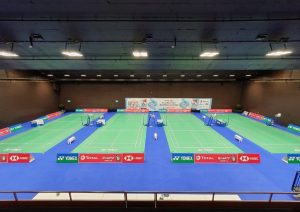
Demand Response: Participate in demand response programs by remotely adjusting lighting loads in response to grid conditions or utility signals, contributing to grid stability and efficiency.
(IV) Integration with Smart Technologies
IoT Connectivity:
Integrate lighting systems with IoT platforms to enable seamless communication and interoperability with other smart devices and building systems.
Leverage data from sensors and actuators to create intelligent lighting solutions that adapt to changing environmental conditions and user requirements.
Cloud-based Solutions:
Deploy cloud-based remote control and monitoring platforms for scalable and flexible management of lighting systems across multiple venues or locations.
Access real-time data, analytics, and diagnostic tools from any internet-connected device for comprehensive oversight and management.
(V) Conclusion
Remote control and monitoring of LED lighting offer sports venues a powerful tool for optimizing performance, efficiency, and maintenance. By enabling centralized management, real-time oversight, and proactive maintenance, these systems enhance operational efficiency, reliability, and user experience. As remote control and monitoring technology continues to evolve, it will play an increasingly important role in enhancing the sustainability and competitiveness of sports venues around the world.
C. Technological Integrations
1. Integration with smart systems and IoT
(I) Introduction to Integration with Smart Systems and IoT
Definition:
LED technology integration with smart systems and the Internet of Things (IoT) involves connecting LED lighting fixtures to networked platforms and devices to enable intelligent control, automation, and data-driven decision-making.
This integration allows sports venues to optimize lighting performance, energy efficiency, and user experience through advanced capabilities such as remote control, real-time monitoring, and predictive maintenance.
Key Components:
LED Fixtures: Energy-efficient luminaires equipped with embedded sensors, communication interfaces, and smart controls for connectivity and automation.
IoT Platforms: Cloud-based or on-premises platforms that provide infrastructure for managing and analyzing data from connected devices and systems.
Smart Devices: Sensors, actuators, gateways, and other IoT devices that interact with LED lighting systems to collect data, trigger actions, and enable interoperability.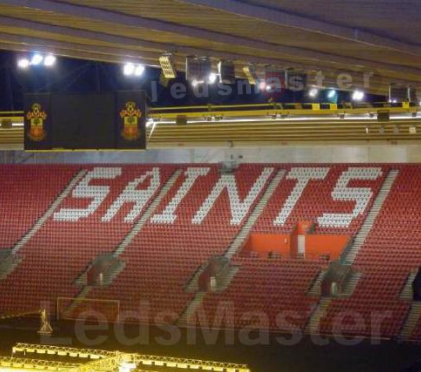
(II) Advantages of Integration with Smart Systems and IoT
Enhanced Control and Automation:
Real-time monitoring and control capabilities enable dynamic adjustments to lighting settings based on factors such as occupancy, ambient light levels, and user preferences.
Automation features allow for scheduled lighting programs, adaptive scenarios, and responsive actions to optimize performance and energy efficiency.
Data-Driven Insights:
IoT connectivity enables the collection of valuable data on lighting usage, energy consumption, occupancy patterns, and environmental conditions.
Data analytics and machine learning algorithms provide actionable insights for optimizing lighting operations, space utilization, and resource allocation.
Interoperability and Scalability:
Integration with IoT platforms enables seamless interoperability with other smart devices, building systems, and third-party applications.
Scalable solutions accommodate the expansion of connected devices and functionalities to meet evolving needs and requirements.
(III) Practical Applications in Sports Venues
Dynamic Lighting Control:
Event-based Programming: Customize lighting scenes for different sports events, concerts, or activities and synchronize them with event schedules or broadcast cues.
Adaptive Scenarios: Automatically adjust lighting levels, colors, and effects in response to changing game conditions, spectator activities, or venue configurations.
Energy Management and Sustainability:
Demand Response: Participate in demand response programs by dynamically adjusting lighting loads based on grid conditions, utility signals, or renewable energy availability.
Energy Optimization: Optimize energy consumption through predictive analytics, load balancing, and optimization algorithms that minimize waste and maximize efficiency.
User Experience Enhancement:
Personalized Settings: Allow users to customize lighting preferences through mobile apps, touch panels, or voice commands for tailored experiences.
Interactive Features: Integrate lighting with interactive displays, augmented reality (AR) experiences, and audience engagement platforms to create immersive environments and interactive fan experiences.
(IV) Integration with Emerging Technologies
Edge Computing:
Deploy edge computing capabilities to process data locally at the edge of the network, reducing latency, enhancing security, and enabling real-time decision-making for time-sensitive applications.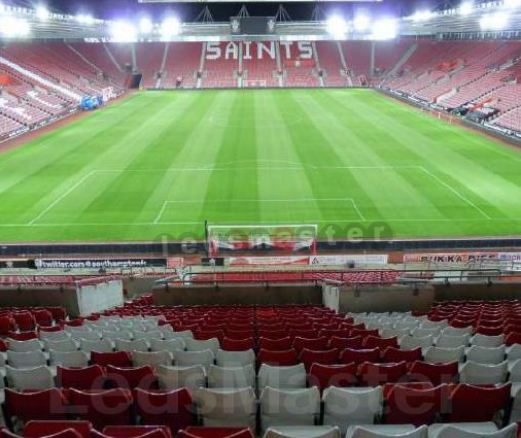
5G Connectivity:
Leverage 5G networks to enable high-speed, low-latency communication between LED lighting systems and IoT devices, supporting advanced functionalities such as real-time video streaming, augmented reality, and remote monitoring.
Artificial Intelligence (AI):
Harness the power of AI and machine learning algorithms to analyze vast amounts of data collected from LED lighting systems and IoT sensors, uncovering patterns, trends, and insights that inform decision-making and optimization strategies.
(V) Conclusion
Integration of LED technology with smart systems and IoT offers sports venues unprecedented opportunities to enhance performance, efficiency, and user experience. By leveraging advanced control, automation, and data analytics capabilities, venues can create intelligent lighting solutions that adapt to changing needs and deliver tangible benefits in terms of energy savings, sustainability, and operational excellence. As technology continues to evolve, the integration of LED lighting with smart systems and IoT will play a pivotal role in shaping the future of sports venue design, management, and innovation.
2. Sensor technology for dynamic lighting adjustments
(I) Introduction to Sensor Technology
Definition:
Sensor technology in LEDs involves integrating sensors directly into lighting fixtures to monitor environmental conditions, occupancy, and user interactions.
These sensors provide real-time data that enables dynamic adjustments to lighting parameters such as intensity, color temperature, and distribution.
Key Components:
Occupancy Sensors: Detect the presence or absence of people in specific areas and trigger lighting adjustments accordingly.
Ambient Light Sensors: Measure natural light levels and adjust artificial lighting to maintain desired illumination levels while maximizing energy savings.
Motion Sensors: Detect movement within a defined space and activate or adjust lighting to enhance safety and security.
(II) Advantages of Sensor Technology
Real-Time Responsiveness:
Sensor-equipped LEDs can respond immediately to changes in occupancy, activity levels, or environmental conditions, ensuring optimal lighting at all times.
Dynamic adjustments improve user comfort, safety, and energy efficiency by adapting lighting to specific needs and usage patterns.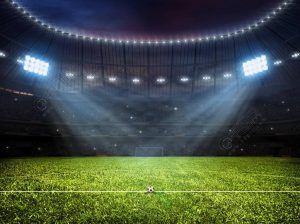
Energy Efficiency:
By dimming or turning off lights in unoccupied areas, occupancy sensors help reduce energy consumption and operating costs without sacrificing visibility or safety.
Ambient light sensors enable daylight harvesting strategies that adjust artificial lighting levels in response to available natural light, further optimizing energy usage.
Enhanced User Experience:
Dynamic lighting adjustments based on user presence, activity, or preferences enhance the overall user experience by providing comfortable and personalized illumination.
Adaptive lighting scenarios create immersive environments that engage spectators, enhance gameplay, and elevate the atmosphere during events.
(III) Practical Applications in Sports Venues
Player Performance Enhancement:
Adaptive Illumination: Adjust lighting levels and color temperatures based on player activities, game conditions, or broadcast requirements to optimize visibility and performance.
Motion Tracking: Use motion sensors to follow players’ movements and dynamically adjust lighting to ensure consistent illumination and minimize shadows.
Spectator Experience Improvement:
Dynamic Atmosphere: Create dynamic lighting effects synchronized with game events, music, or crowd reactions to enhance the spectator experience and energize the venue.
Comfort Optimization: Monitor occupancy levels and adjust lighting in seating areas, concourses, and hospitality areas to maintain comfort and ambiance throughout the venue.
Energy Management and Sustainability:
Occupancy-Based Control: Dim or turn off lights in unoccupied areas such as locker rooms, corridors, and restrooms to conserve energy and reduce operational costs.
Daylight Harvesting: Automatically adjust lighting levels in response to natural light levels to minimize energy consumption while maintaining consistent illumination.
(IV) Integration with Smart Systems and IoT
Data Integration and Analytics:
Integrate sensor data with IoT platforms and analytics tools to gain insights into usage patterns, occupancy trends, and energy consumption profiles.
Analyze data to identify opportunities for optimization, energy savings, and operational efficiencies across the venue.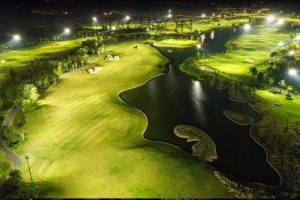
Centralized Control and Automation:
Leverage IoT platforms to centrally manage and automate lighting controls, sensor configurations, and adaptive scenarios for seamless operation and maintenance.
Enable remote monitoring, real-time alerts, and predictive maintenance to ensure optimal performance and reliability of sensor-equipped LED lighting systems.
(V) Conclusion
Sensor technology integrated into LED lighting systems offers sports venues powerful capabilities for dynamic lighting adjustments that enhance performance, user experience, and sustainability. By leveraging occupancy sensors, ambient light sensors, and motion sensors, venues can create adaptive lighting solutions that respond intelligently to changing conditions and user needs. Integration with smart systems and IoT platforms further enhances control, automation, and data-driven decision-making, positioning sensor-equipped LED lighting as a cornerstone of modern sports venue design and management.
3. Data collection and analytics
(I) Introduction to Data Collection and Analytics
Definition:
Data collection and analytics in LED lighting involves gathering, processing, and analyzing data generated by lighting systems to derive insights, optimize performance, and inform decision-making.
This process enables sports venues to monitor energy usage, track operational metrics, and identify opportunities for efficiency improvements and cost savings.
Key Components:
Sensor Technology: Embedded sensors in LED fixtures capture data on lighting intensity, color temperature, occupancy, and environmental conditions.
IoT Connectivity: Networked communication interfaces enable data transmission from lighting fixtures to centralized platforms for analysis and control.
Analytics Tools: Software applications and algorithms process raw data to extract meaningful insights, trends, and performance metrics.
(To Be Continued)

